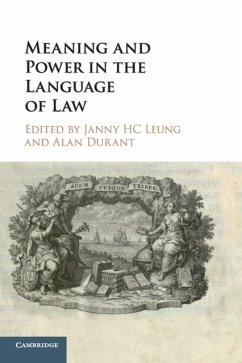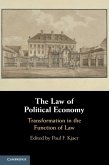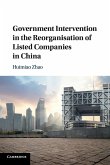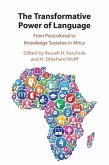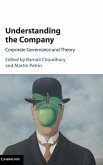Meaning and Power in the Language of Law
Herausgeber: Leung, Janny H C; Durant, Alan
Meaning and Power in the Language of Law
Herausgeber: Leung, Janny H C; Durant, Alan
- Broschiertes Buch
- Merkliste
- Auf die Merkliste
- Bewerten Bewerten
- Teilen
- Produkt teilen
- Produkterinnerung
- Produkterinnerung
For centuries people have recognised the importance of language in creating and applying law. This edited volume shows scholars and students how modern linguistics and related fields contribute to understanding the role language plays, and what follows from viewing law's power as a matter of situated communication in specific social relations rather than an abstract system of rules.
Andere Kunden interessierten sich auch für
![The Legal Authority of ASEAN as a Security Institution The Legal Authority of ASEAN as a Security Institution]() Hitoshi Nasu (University of Exeter)The Legal Authority of ASEAN as a Security Institution54,99 €
Hitoshi Nasu (University of Exeter)The Legal Authority of ASEAN as a Security Institution54,99 €![The Development of the Rule of Law in ASEAN The Development of the Rule of Law in ASEAN]() Imelda Deinla (Canberra Australian National University)The Development of the Rule of Law in ASEAN124,99 €
Imelda Deinla (Canberra Australian National University)The Development of the Rule of Law in ASEAN124,99 €![The Law of Political Economy The Law of Political Economy]() The Law of Political Economy41,99 €
The Law of Political Economy41,99 €![Government Intervention in the Reorganisation of Listed Companies in China Government Intervention in the Reorganisation of Listed Companies in China]() Huimiao ZhaoGovernment Intervention in the Reorganisation of Listed Companies in China37,99 €
Huimiao ZhaoGovernment Intervention in the Reorganisation of Listed Companies in China37,99 €![The Transformative Power of Language The Transformative Power of Language]() The Transformative Power of Language32,99 €
The Transformative Power of Language32,99 €![Understanding the Company Understanding the Company]() Understanding the Company85,99 €
Understanding the Company85,99 €![On Feeding the Masses On Feeding the Masses]() John K. Yasuda (Indiana University)On Feeding the Masses41,99 €
John K. Yasuda (Indiana University)On Feeding the Masses41,99 €-
-
-
For centuries people have recognised the importance of language in creating and applying law. This edited volume shows scholars and students how modern linguistics and related fields contribute to understanding the role language plays, and what follows from viewing law's power as a matter of situated communication in specific social relations rather than an abstract system of rules.
Produktdetails
- Produktdetails
- Verlag: Cambridge University Press
- Seitenzahl: 346
- Erscheinungstermin: 17. September 2020
- Englisch
- Abmessung: 229mm x 152mm x 18mm
- Gewicht: 512g
- ISBN-13: 9781107533158
- ISBN-10: 1107533155
- Artikelnr.: 60000071
- Herstellerkennzeichnung
- Libri GmbH
- Europaallee 1
- 36244 Bad Hersfeld
- gpsr@libri.de
- Verlag: Cambridge University Press
- Seitenzahl: 346
- Erscheinungstermin: 17. September 2020
- Englisch
- Abmessung: 229mm x 152mm x 18mm
- Gewicht: 512g
- ISBN-13: 9781107533158
- ISBN-10: 1107533155
- Artikelnr.: 60000071
- Herstellerkennzeichnung
- Libri GmbH
- Europaallee 1
- 36244 Bad Hersfeld
- gpsr@libri.de
Editors' Introduction Janny H. C. Leung and Alan Durant; Part I. Sui
generis or Socially Problematic: The Character of Legal Language: 1. The
unspoken language of the law Laura Nader; 2. Seeing sense: the complexity
of key words that tell us what law is Alan Durant; 3. Hiding in plain
sight: the category of ordinary language and the case law domain of
transgender marriage Christopher Hutton; Part II. Imperfect Fit between
Legal Categories and Social Discourse: 4. Effects of translation on the
invisible power wielded by language in the legal sphere: the case of Nepal
Katsuo Nawa; 5. The language of film and the representation of legal
subjectivity in Juno Mak's Rigor Mortis Marco Wan; Part III. Written in
Silence: Hidden Social Meanings in Legal Discourse: 6. Let the fingers do
the talking: language, gesture and power in closing argument Greg Matoesian
and Kristin Enola Gilbert; 7. Questions about questioning: courtroom
practice in China and the USA Meizhen Liao; 8. Law, language and community
sentiment: behind hate speech doctrine in India Siddharth Narrain; Part IV.
Conflict between Linguistic and Legal ideologies: 9. When voices fail to
carry: voice projection and the case of the 'dumb' jury Chris Heffer; 10.
Ideology and political meaning in legal translation Janny H. C. Leung; Part
V. Demands of Law and Limits of Language: 11. Law and the grammar of
judgment Janet Ainsworth; 12. Legal indeterminacy in the spoken word
Lawrence M. Solan and Silvia Dahmen; Afterword: 13. The said of the unsaid
Peter Goodrich.
generis or Socially Problematic: The Character of Legal Language: 1. The
unspoken language of the law Laura Nader; 2. Seeing sense: the complexity
of key words that tell us what law is Alan Durant; 3. Hiding in plain
sight: the category of ordinary language and the case law domain of
transgender marriage Christopher Hutton; Part II. Imperfect Fit between
Legal Categories and Social Discourse: 4. Effects of translation on the
invisible power wielded by language in the legal sphere: the case of Nepal
Katsuo Nawa; 5. The language of film and the representation of legal
subjectivity in Juno Mak's Rigor Mortis Marco Wan; Part III. Written in
Silence: Hidden Social Meanings in Legal Discourse: 6. Let the fingers do
the talking: language, gesture and power in closing argument Greg Matoesian
and Kristin Enola Gilbert; 7. Questions about questioning: courtroom
practice in China and the USA Meizhen Liao; 8. Law, language and community
sentiment: behind hate speech doctrine in India Siddharth Narrain; Part IV.
Conflict between Linguistic and Legal ideologies: 9. When voices fail to
carry: voice projection and the case of the 'dumb' jury Chris Heffer; 10.
Ideology and political meaning in legal translation Janny H. C. Leung; Part
V. Demands of Law and Limits of Language: 11. Law and the grammar of
judgment Janet Ainsworth; 12. Legal indeterminacy in the spoken word
Lawrence M. Solan and Silvia Dahmen; Afterword: 13. The said of the unsaid
Peter Goodrich.
Editors' Introduction Janny H. C. Leung and Alan Durant; Part I. Sui
generis or Socially Problematic: The Character of Legal Language: 1. The
unspoken language of the law Laura Nader; 2. Seeing sense: the complexity
of key words that tell us what law is Alan Durant; 3. Hiding in plain
sight: the category of ordinary language and the case law domain of
transgender marriage Christopher Hutton; Part II. Imperfect Fit between
Legal Categories and Social Discourse: 4. Effects of translation on the
invisible power wielded by language in the legal sphere: the case of Nepal
Katsuo Nawa; 5. The language of film and the representation of legal
subjectivity in Juno Mak's Rigor Mortis Marco Wan; Part III. Written in
Silence: Hidden Social Meanings in Legal Discourse: 6. Let the fingers do
the talking: language, gesture and power in closing argument Greg Matoesian
and Kristin Enola Gilbert; 7. Questions about questioning: courtroom
practice in China and the USA Meizhen Liao; 8. Law, language and community
sentiment: behind hate speech doctrine in India Siddharth Narrain; Part IV.
Conflict between Linguistic and Legal ideologies: 9. When voices fail to
carry: voice projection and the case of the 'dumb' jury Chris Heffer; 10.
Ideology and political meaning in legal translation Janny H. C. Leung; Part
V. Demands of Law and Limits of Language: 11. Law and the grammar of
judgment Janet Ainsworth; 12. Legal indeterminacy in the spoken word
Lawrence M. Solan and Silvia Dahmen; Afterword: 13. The said of the unsaid
Peter Goodrich.
generis or Socially Problematic: The Character of Legal Language: 1. The
unspoken language of the law Laura Nader; 2. Seeing sense: the complexity
of key words that tell us what law is Alan Durant; 3. Hiding in plain
sight: the category of ordinary language and the case law domain of
transgender marriage Christopher Hutton; Part II. Imperfect Fit between
Legal Categories and Social Discourse: 4. Effects of translation on the
invisible power wielded by language in the legal sphere: the case of Nepal
Katsuo Nawa; 5. The language of film and the representation of legal
subjectivity in Juno Mak's Rigor Mortis Marco Wan; Part III. Written in
Silence: Hidden Social Meanings in Legal Discourse: 6. Let the fingers do
the talking: language, gesture and power in closing argument Greg Matoesian
and Kristin Enola Gilbert; 7. Questions about questioning: courtroom
practice in China and the USA Meizhen Liao; 8. Law, language and community
sentiment: behind hate speech doctrine in India Siddharth Narrain; Part IV.
Conflict between Linguistic and Legal ideologies: 9. When voices fail to
carry: voice projection and the case of the 'dumb' jury Chris Heffer; 10.
Ideology and political meaning in legal translation Janny H. C. Leung; Part
V. Demands of Law and Limits of Language: 11. Law and the grammar of
judgment Janet Ainsworth; 12. Legal indeterminacy in the spoken word
Lawrence M. Solan and Silvia Dahmen; Afterword: 13. The said of the unsaid
Peter Goodrich.

